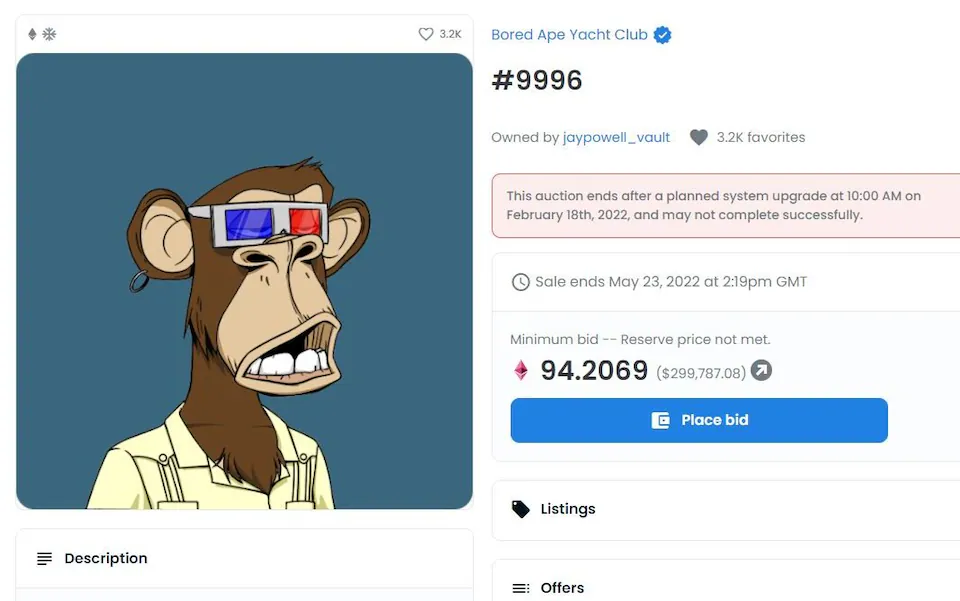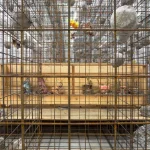
The garish, exorbitantly priced JPGs currently bewitching the art world might not be to everyone’s taste. But since when has that mattered?
With its knack for colliding cultural novelty with fast money and a lack of judgement, contemporary art is always an easy target for ridicule – “You paid how much for that thing?” – the fable of the emperor’s new clothes the go-to of exasperated aesthetic traditionalists. Right now, in contemporary art there’s currently no greater shock of the new than the chaotic explosion of NFT art – digital “artworks” of wildly varying quality, traded in online markets, themselves riding the bizarre boom in cryptocurrencies.
It’s hard to ignore the current NFT art craze, just as it’s hard to take them seriously, particularly when C-list celebrities are busy reinventing themselves as NFT aficionados – as Paris Hilton recently did on her much-derided appearance on Jimmy Fallon’s Tonight Show. There, the hapless pair burbled like covetous toddlers about their ownership of cartoon “Bored Apes” – one of the sillier collections of images whose individual variations have fetched millions in cryptocurrency and proper money… 10,000 of them out there to collect and trade, if you’re so inclined.
NFTs might turn out to be a perfect storm of artistic vacuity and out-of-control speculative financial mania and celebrity endorsements only exploit the public interest in a phenomenon for which the overriding interest is the prospect of turning a big profit as other buyers pile in after you – a classic speculative bubble and, some critics say, not unlike a Ponzi scheme.
And if that’s the only concern, who cares if it’s art? Sotheby’s has just been sued by over the ownership of a pulsating geometric graphic (Kevin McCoy’s “Quantum”) which looks like an ancient screensaver but was sold by the auction house for $1.47m. You can be sure the litigant isn’t after the screensaver because of it’s particularly visually interesting or beautiful, but because its rarity confers on it special financial value to be fought over.
Yet maybe there’s still a case to make for art in the apparently deranged world of NFTs – if we can stop seeing this phenomenon as only a hustle; most art made in a market economy has always been the by-product of a hustle, and the real business of art has been to work out what goes beyond it.
Most art, after all, often bought for tidy sums in its day now lies forgotten; in attics and junk shops or, if it’s lucky, in the possession of collectors and perhaps even museums. How it gets there is a long, complicated process of a culture working out what it likes, what’s important, and why.
Clearly, what most rattles the established artworld about NFTs is that nobody seems to be in charge of this process, while someone, somewhere is making a great deal of money – a prospect which makes the otherwise liberal artworld turn into “that’s not art!” pearl clutchers.
As The Art Newspaper’s veteran observer Georgina Adam recently noted “in the traditional art world, there is a whole structure that endorses art: scholars, curators, museums, collectors, critics and art galleries”, gatekeepers of who gets to be part of the canon.
But, Adams points out that “the sudden explosion of NFTs has come so quickly that no such validating structure has had time to be built up.” To which it’s tempting to reply: good. Good, because for the first time in long while, contemporary art’s gatekeepers have temporarily lost control over both the money and the discourse which underwrites what gets anointed as valuable.
This has its undoubted downside – many involved in the NFT boom are only interested in the money, and hype and popularity rule – aesthetic mass appeal, the visual lowest common denominator, is what drives thousands to buy yet another Bored Ape. Sold and traded in their thousands, these “editions” are the products of pop culture – their “collectors” ordinary people who, rather than just gamble on cryptocurrencies, notice that there’s added value in trading in cultural “artefacts”, a more tangible form of speculation. A generation of young artists, for their part, have discovered that even a few sales of a large edition can add up to a decent profit.
Are Bored Ape art? Of course not. They never pretended to be. Can NFTs be art? Of course they can, since there are plenty of artists – “digital” artists who for years have lived in the margins of the conventional artworld – busy experimenting with what images can be made using code, algorithms and AI. And rather than stick to the same big, predictable marketplaces, artists are starting to develop their own platforms for showcasing their work (like the recently launched Feral File).
Meanwhile, online publications are springing up to cater to these interests, with titles such as the insider-ish Right-Click-Save or the superbly designed Artcode. In other words, there’s a market developing that involves innovative art, and a new kind of (NFT) art criticism.
This has always been the way new artistic cultures emerge; artists outside the mainstream, enthusiastic collectors and critical journals and magazines fostering a critical culture around them. The only difference is now that the art, the gallery in which it’s exhibited, the market that buys it and the art criticism that attends it, are all virtual, the products of a culture founded on flat screens, not canvases.
Much of it will be rubbish. But that has been the rule in art history, not the exception. Nor are any of us obliged to look at any of it. The speculative craziness of cryptocurrency that propelled NFTs to public attention will, hopefully, start to fade; glance at the price of the biggest cryptocurrencies, including the NFT-supporting Ethereum, shows few gains against this time last year.
But in principle, blockchain-based markets for artworks offer artists a different space, away from the over-invested, brick-and-mortar world of art galleries, institutions and museums. Artists might not need their gatekeepers, since there’s little incentive to get past the gate. Taking art seriously – even NFTs – isn’t the exclusive privilege of a professional class of curatorial gatekeeps, but of enthusiasts everywhere.



